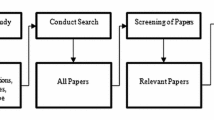Abstract
This paper discusses heuristic “branch and bound” methods for solving mixed integer linear programming problems. The research presented on here is the follow on to that recorded in [3].
After a resumé of the concept of pseudo-costs and estimations, new heuristic rules for generating a tree which make use of pseudo-costs and estimations are presented. Experiments have shown that models having a low percentage of integer variables behave in a radically different way from models with a high percentage of integer variables. The new heuristic rules seem to apply generally to the first type of model.
Later, other heuristic rules are presented that are used with models having a high percentage of integer variables and with models having a special structure (models including special ordered sets.)
The rules introduced here have been implemented in the IBM Mathematical Programming System Extended/370. They are used to solve large mixed integer linear programming models.
Numerical results that permit comparisons to be made among the different rules are provided and discussed.
Similar content being viewed by others
References
E.M.L. Beale and R.E. Small, “Mixed integer programming by a branch and bound technique”, in: W.H. Kalenich, ed.,Proceedings of the IFIP congress 65, Vol. 2 (1966) pp. 450–451.
E.M.L. Beale and J.A. Tomlin,” Special facilities in a general mathematical programming system for non-convex problems using ordered sets of variables”, in:Proceedings of the 5th IFORS conference 1969 (Tavistock Publications London).
M. Bénichou, J.M. Gauthier, P. Girodet, G. Hentges, G. Ribière and O. Vincent, “Experiments in mixed-integer linear programming”,Mathematical Programming 1 (1971) 76–94.
R. Breu and C.A. Burdet, “Branch and bound experiments in 0–1 programming”,Mathematical Programming Study 2 (1974) 1–50.
R.J. Dakin, “A tree search algorithm for mixed integer programming problems”,The Computer Journal 8 (1965) 250–255.
N.J. Driebeek, “An algorithm for the solution of mixed integer programming problems”,Management Science 12 (1966) 576–587.
J.J.H. Forrest and J.A. Tomlin, “Updated triangular factors of the basis to maintain sparsity in the product form simplex method”,Mathematical Programming 2 (3) (1972) 263–278.
J.J.H. Forrest, J.P. Hirst and J.A. Tomlin, “Practical solution of large mixed integer programming problems with UMPIRE”,Management Science 20 (5) (1974).
A.M. Geoffrion and R.E. Marsten, “Integer programming algorithms: a framework and state-of-the-art-survey” in: A.M. Geoffrion, ed.,Perspectives on optimization (Addison-Wesley, 1972).
Paula Harris, “Pivot selection methods of the devex LP Code”,Mathematical Programming 5 (1973) 1–28 [Also:Mathematical Programming Study 4 (1975) 30–57.]
P. Herve, “Résolution des programmes linéaires à variables mixtes par la procédure SEP”,METRA 6 (19 ) 1–67.
IBM Mathematical Programming System Extended/370 (MPSX/370): Mixed Integer Programming/370(MIP/370) Program Reference Manual, SH19-1099 (December 1974).
A.H. Land and A.G. Doig, “An automatic method of solving discrete programming problems”,Econometrica 28 (1960) 497–520.
C.E. Lemke and Kurt Spielberg, “Direct search zero–one and mixed integer programming”, Report L3, IBM Data Processing Division, New York Scientific Center (1966).
G. Mitra, “Designing branch and bound algorithms for mathematical programming”,7th international symposium on mathematical programming, 1970, The Hague, Holland.
B. Roy, R. Benayoun and J. Tergny, “De la procédure SEP au programme Ophélie mixte”,SEMA (1969).
R. Shareshian and K. Spielberg, “On integer and mixed integer programming and related areas in mathematical programming”, IBM N.Y. Scientific Center (1966).
J.A. Tomlin, “Branch and bound method for integer and non-convex programming”, in: J. Abadie, ed.,Integer and nonlinear programming (North-Holland, 1970).
J.A. Tomlin, “On pricing and backward transformation in linear programming”,Mathematical Programming 6 (1974) 42–47.
Author information
Authors and Affiliations
Rights and permissions
About this article
Cite this article
Gauthier, J.M., Ribière, G. Experiments in mixed-integer linear programming using pseudo-costs. Mathematical Programming 12, 26–47 (1977). https://doi.org/10.1007/BF01593767
Received:
Revised:
Issue Date:
DOI: https://doi.org/10.1007/BF01593767




